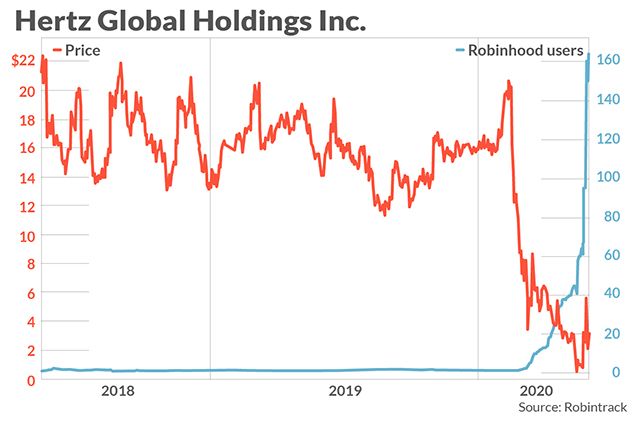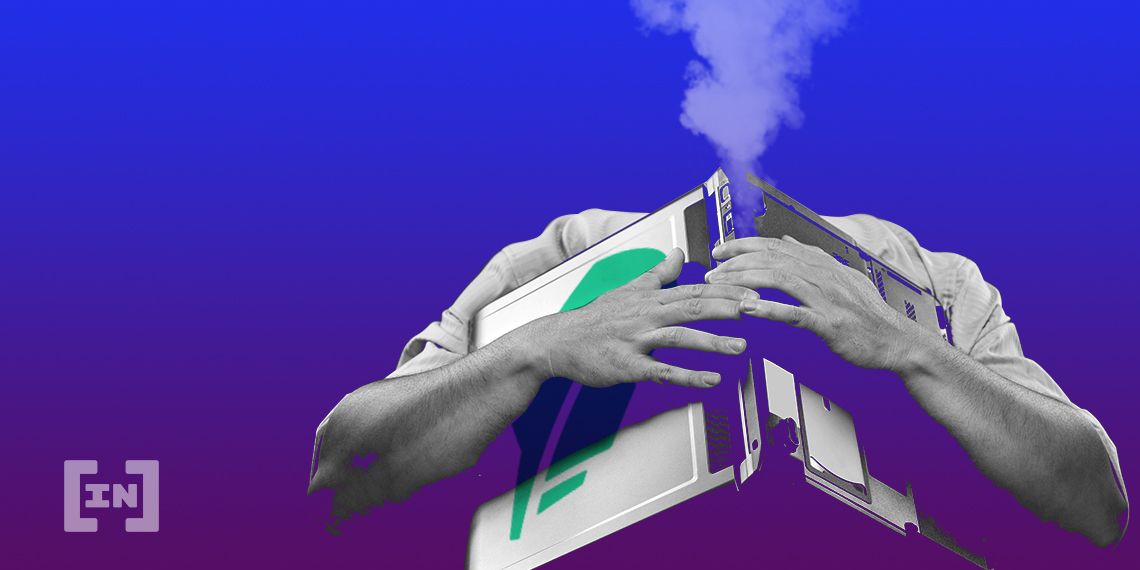Robinhood is simply a modern phenomenon. That much, everyone across the entire financial sector can agree with. On just about everything else to do with Robinhood, however, there is plenty of disagreement.
So how did Robinhood become so large, so successful, and so controversial?
The Breakout of Robinhood
Robinhood hardly seems like an anomaly, at least on the surface. It is a financial services company, based in California. More specifically, it is a brokerage firm that allows its customers to invest in stocks, ETFs, and options. But, that’s as far as the normality goes.
Robinhood has placed itself firmly within the fintech uprising, offering the ability to invest and trade with cryptocurrency. In addition, nearly everything within Robinhood can be done on its mobile app. And to cap it all off, it offers zero-commission on all trades.
Robinhood was founded in April 2013 by Vladimir Tenev and Baiju Bhatt, both of whom came from high-frequency trading (HFT) backgrounds. They named the company after the mythical man of the people because they wanted to “provide everyone with access to the financial markets, not just the wealthy.” Together, they oversaw the rise of Robinhood to just under 10 million users at the end of 2019.
SponsoredWith this growth has come increasing investment interest of their own. Robinhood recently raised $280m in Series-F funding making for an $8.3 billion valuation. The platform’s investors include Sequoia Capital, Ribbit Capital, and Unusual Ventures.
It has also dipped its toes into acquisitions. In March 2019, Robinhood acquired MarketSnacks, a digital media company that produces a daily newsletter that aims to report on Wall Street.
Since the start of 2020, the number of Robinhood users has skyrocketed by almost 3 million. This recent surge in popularity has forced it to further delay its UK launch. Originally expected in Q1 2020, an email was sent out to those on the waiting list last Friday to let those potential customers know that it would be a while before its UK roll-out would be complete.
Because of the resources and manpower used in handling the massive trade volumes, Robinhood simply cannot yet handle the additional numbers that the UK would bring. UK customers will have to settle with using other apps such as Trading 212 and Freetrade.
Additionally, it seems that not a day goes by in 2020 without another news story that features the brokerage firm. These developments seem to beg two questions: 1) What’s behind the sudden surge in popularity? and 2) What impact will the platform have on the market?
From Crypto-Markets to Wall Street
So, where are all these users coming from? The answer in many ways linked to the stay-at-home orders and lockdown restrictions that have been imposed during the COVID-19 pandemic. People stuck at home are looking for something to fill their time, and to spend their money on. This is especially true for those who have been furloughed. Combine a massive reduction in general expenses and purchases with a government stimulus check, and many people may now have more disposable income available.
The Robinhood app also appeals to the crypto-community, offering a combination of stock market and crypto-trading options. What’s more, this combination of the two allows its users to invest their profits from one side into the other. So you have a scenario in which traders are taking their cryptocurrency funds and investing it into the stock market. Many hope to make gains from stock trading to re-invest into their crypto-portfolio.
While this may be good news for Bitcoin et al. it is perhaps not such good news for market volatility. Rather than fitting the profile of long-term investors, Robinhood investors will be more akin to day-traders. Most are looking for quick gains, and they likely won’t be hanging around. This would also explain why there is a huge demand for Robinhood to continually add features used by day-traders, including options trading.
Robinhood vs the World
All of this goes some way to explaining the recent market events that have left traditional investors and market analysts baffled. Some of the most notable and talked about examples of this are Hertz, Chesapeake, and J. C. Penney.
Recently, following reports of bankruptcy, Hertz ($HTZ) sank to a share price of $0.40. This was coupled with an exodus of its major investors, which included Carl Icahn, who sold his entire 39% position at a loss of almost $1.8B.
Despite all this, Hertz was to see its stock surge in price just days later, to a high of $5.53 on June 8. It has since trended down to a slightly more relatable $3, but that still represents a 650% increase. These gains have essentially wiped out any losses in equity suffered during the downturn and bankruptcy process. Indeed, following this dramatic turnaround, Hertz has been looking to cash in, hoping to sell up to $1B in freshly-valued stock.
Sponsored SponsoredAnd the reason for this against-all-odds rise in share value? Retail investors, such as Robinhood customers, who were engaging in ‘buying the dip.’ And they were doing this even as an exodus of traditional investors was occurring, en masse. A future investment market, one that pits traditional investors up against retail investors (a large percentage of which will come from Robinhood), is a strange paradigm indeed.
Comment
byu/itsnotshade from discussion
inwallstreetbets
A Kangaroo Market
Indeed, it has been the source of much debate both online and offline — What’s going on with the market? Globally, the economic outlook seems more and more negative. The US stock market, however, has been having no such problems, as evidenced in some of the examples above. Every day it seems, the stock market and the economy become less and less correlated. Much of the blame has, of course, been placed at the feet of Robinhood and its band of merry traders.
The claim is a fairly simple one— this uptake in market volatility and temporary divergence from common sense has coincided with a rapid increase in Robinhood users. Using the example of Hertz, we can see that the number of Robinhood investors skyrocketed while dragging the share price sharply upwards. But does this also apply to the wider market?
Barclays doesn’t seem to think so. saying that the market rally isn’t really due to Robinhood. It decided to make an investigation into this allegation using the commonly-used website Robintrack. The research has indicated that the two are not as strongly linked as commonly believed.
“Just because two things happen at the same time doesn’t mean one causes the other,” Barclays analyst Ryan Preclaw, said. “And while it’s true that many high-return stocks have had a substantial increase in retail ownership, low-return stocks have also had a big increase.”
If we assume that the effect of Robinhood’s investors is not behind this recent rally, then what is? Firstly, we cannot guarantee that the market will not drop again. A recently circulated screenshot showed that CNBC was now terming the market as being “kangaroo.”
https://twitter.com/cryptojackk/status/1271637103575793665
Other analysts posit that you can point the finger of responsibility at the oft-repeated mantra of today’s market that you should always “buy low, sell high.” This has spread into almost a commandment for the general retail market.
SponsoredIn addition, you have many traders and economists betting everything on a ‘V’ shaped recovery. That is, the slump in shares is purely related to COVID-19, and not a marker of company issues or downward market trends. Once this pandemic crisis is over, the view goes, we will rocket back into economic paradise. This is a view that President Trump also shares, and is doing his utmost to stay true to. There is, however, questionable evidence to that being the case.
A Brokerage Firm for the Common Man?
So Robinhood might be responsible for the creation of our current ‘kangaroo’ market. It also might not be. And even if it was, as a single brokerage firm, can it really be held accountable for the (legal) actions its users take? Still, that doesn’t mean it’s all peaches and cream at Robinhood.
As already explained, due to the Coronavirus, Robinhood has seen an explosion in popularity. This growth has been anything but smooth, however, as Robinhood’s trading app crashed three times in a single week as the market experienced a free-fall in early March.
This was one of the reasons that the aforementioned UK launch was delayed, as the platform could barely handle the customers it already had. This turbulence, though, has apparently not scared retail traders away from the commission-free broker.
Rise of the Retail Trader
That brings us to the second issue — retail traders. As long as the investment industry has existed, there has existed professional investors and retail investors.
Retail investors have tended to have smaller amounts of capital to invest, and less sophisticated systems and information to make these investments. Due to this, regulatory bodies such as the SEC have tended to offer increased protection to these traders, in order to stop unscrupulous firms and brokers from taking advantage of them.
Retail traders, as discussed above, also act differently to their counterparts in professional investment institutions. They are less concerned with long-term investments, respecting traditional strategies, and more prone to ‘panic-selling.’ As such, they are regarded with suspicion by analysts and the rest of the market.
In modern times, these investors do make up a significant part of the market, particularly in the U.S. According to the Federal Reserve’s survey of consumer finances, 54% of households owned stocks in 2017. Robinhood, of course, is a massive part of this modern growth, being a brokerage platform for these retail investors.
Sponsored SponsoredToo Easy for Users?
Part of the reason why Robinhood is so attractive to the retail market is its ease-of-use. Everything about Robinhood is designed to make opening an account and making trades as easy as possible. The tools available are simple to use and rudimentary in nature. And, when it comes to the investment market, this is not necessarily a good thing. Many analysts and officials have expressed concern about opening up a large part of the market to these unsophisticated traders. They are more likely to take a gambler’s approach to the stock market, and may not have the funds in place to cover themselves when things go terribly wrong.
Furthermore, Robinhood has recently unveiled Robinhood Gold, its premium platform. This service offers extended-hours trading, margin accounts, and larger instant deposits in exchange for a flat monthly fee. In practice, this can allow users to take on large amounts of leverage that they are often severely unequipped to deal with.
Robinhood Customers Getting a Raw Deal?
The other appeal to retail traders, of course, is Robinhood’s commission-free offer on trades. Many other firms have since offered similar zero-commission rates on a majority of their trades. However, the ways in which Robinhood goes about generating income without that commission have been a bit controversial.
Robinhood Gold generates a decent amount of revenue for the fintech company. Its primary money-maker, however, comes from ‘payments for order flow.’ This is regarded by many within the industry, as a highly controversial practice.
Analysts have calculated that Robinhood is making $260 per $1,000,000 traded from payments for order flow, compared to other industry competitors such as E*TRADE, which generates around $22 for the same trading volume. This is only a rough approximation, however, as Robinhood does their best to make it as unclear as possible as to how much it’s making from this practice.
The likely source of these profits? HFT firms that are looking to make big profits off this fresh retail trading volume. This seems even more likely when you remember the Robinhood founders’ employment background. Of course, a lot of this is speculation. What is for certain, though, is that Robinhood is making vast quantities of money from payments for flow order—and this is bad news for its customers.
The fact that the platform can generate such revenue from this method incentivizes it to push as many trades through that process as possible. Coupled with the fact that this often results in a bad deal for the retail trader, this should be a worry for everyone on the platform. If you aren’t paying for a product, you must remember that YOU are the product. This is also true for Google with its advertising data, and it’s true for Robinhood with its customer’s trades.
Indeed, in December 2019, the Financial Industry Regulatory Authority (FINRA) fined Robinhood Financial, a subsidiary of Robinhood Markets, $1.25 million for ‘best execution’ violations related to customer equity orders and related supervisory failures that occurred between October 2016 and November 2017. FINRA accused Robinhood of directing trades to a total of four broker-dealers that had paid for the order flow, and the company failed to satisfy its best execution obligations.
What’s Next for Robinhood?
There are clearly legitimate concerns about how Robinhood operates on behalf of its customers, and also the impact those customers have had on the stock market. But, for the time being, people are still drawn to the platform like moths to a light source. And with lockdown likely a ways away from being fully lifted across the US, combined with an imminent UK launch, this growth isn’t likely to slow down any time soon.
Whether Robinhood can keep converting this growth into success as a business, however, remains another thing. The longer it keeps on damaging and antagonizing various players and traders within the investment community through its practices, the more likely there will be a backlash.
Increased regulation, especially with regards to its payments for order flow business model, the casual acceptance of cryptocurrency trading, and exposing unsophisticated traders to a cutthroat marketplace, seems likely on the horizon. In addition, any further growth will be pushing its already creaking infrastructure to a potential breaking point.
For now, though, Baju and Vlad will rest easy, knowing that their billion-dollar idea may have changed the investment market forever.






